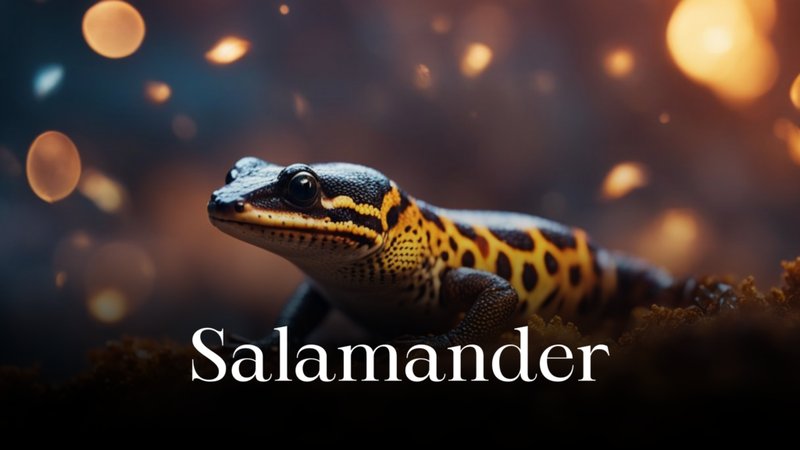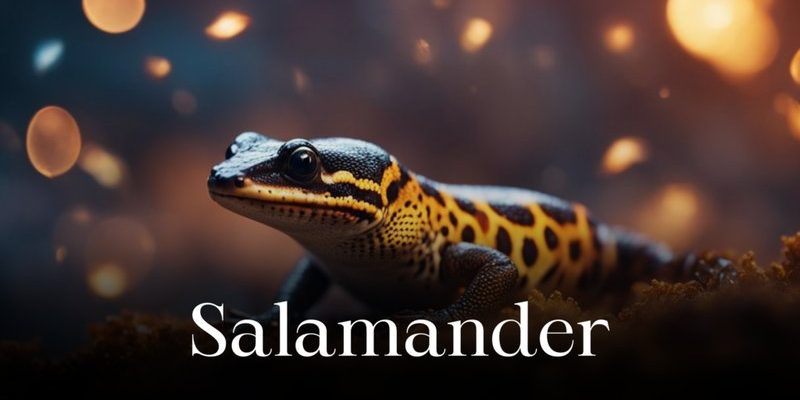
You might be wondering why there’s confusion around such a well-known creature. After all, they’re often found in folklore, and their appearance can be striking. But just as a recipe can have ingredients that don’t quite combine well, misconceptions about salamanders mix with the truths of their biology and behavior. So, grab your favorite coffee mug, and let’s dive into the world of salamanders. We’ll clear up those mythical stories and reveal the scientific wonders that lie beneath.
Myth 1: Salamanders Are Cold-Blooded Creatures
You might have heard that salamanders are cold-blooded, but let’s take a step back and explain what that means. Cold-blooded, or ectothermic, creatures rely on their environment to regulate their body temperature. While it’s true that salamanders can be affected by the temperature around them, calling them cold-blooded doesn’t tell the whole story.
In fact, many species of salamanders can withstand a range of temperatures by finding the right habitats. They often live in moist, shady places, like under logs or leaves. These hideouts help them manage the heat. So, while they might seem sluggish when it’s chilly, you’ll find them more active during warmer, humid days. It’s all about finding that sweet spot for their internal temperature.
Why does this matter? Understanding how salamanders respond to their environment helps us protect their habitats. Climate change can seriously impact these delicate ecosystems, leading to threats for these amphibians. That’s why recognizing that they aren’t just “cold and unresponsive” is vital to their conservation.
Myth 2: Salamanders Can Regenerate Their Limbs
You might have seen videos or heard stories about salamanders regenerating limbs, and while there’s some truth in that, it’s not as magical as it sounds. Salamanders have an incredible ability to regenerate lost body parts, but it’s not the same for all species.
Let me explain: when a salamander loses a limb, it doesn’t just grow back instantly like a wizard casting a spell. Instead, the process takes time. It involves complex biological systems, including the creation of a blastema—a mass of cells that can develop into new tissues. Some species are better at this than others. For example, the axolotl is famously adept at regrowing limbs, while others may not regenerate as effectively.
This unique feature of salamanders shines a light on potential scientific breakthroughs in medicine. Researchers are studying their regenerative abilities to learn how humans might enhance their own healing processes. So, while it sounds like a fable, this ability is grounded in real, ongoing research.
Myth 3: All Salamanders Are Poisonous
It’s easy to assume that if something looks vibrant and colorful, it’s dangerous. Many salamanders are brightly colored, leading to the belief that all of them are toxic. Here’s the thing: while some species are indeed poisonous, not all salamanders produce toxins.
In fact, many salamanders use their bright colors as a warning to predators. This is called aposematism—essentially showing off their “don’t mess with me” colors. However, there are plenty of salamanders that are entirely harmless and can be handled safely.
If you’re curious, you can look at the Eastern Red-Backed Salamander, which is a common and non-toxic species. Knowing which salamanders are safe to interact with can help people appreciate these creatures without fear. Just remember: it’s always best to admire them in their natural habitat rather than trying to handle them.
Myth 4: Salamanders Live All Over the World
You might think salamanders are just about everywhere, like squirrels or pigeons. But the truth is, they have a more limited range. Most salamanders call North America home, especially the eastern and southeastern regions.
Why does geography matter? Well, salamanders thrive in specific environments that provide the moisture they need, along with plenty of cover. Many species can be found in dense forests, wetlands, and near streams, making them quite particular about their habitats. Outside of North America, you’ll find them in parts of Europe and Asia, but their diversity is strongest here in the U.S.
This limitation highlights the importance of habitat preservation. As urban areas expand and forests are cleared, these vital creatures face even more threats. Understanding where they live can inform conservation efforts and help protect their homes.
Myth 5: Salamanders Are Just Small Frogs
Let’s set the record straight: salamanders are not tiny frogs, even if they might resemble them at first glance. While both belong to the class of amphibians, they belong to different orders. Salamanders are part of the order Urodela, while frogs belong to the order Anura.
One significant difference is their physical structure. Salamanders typically have elongated bodies and tails, which are quite different from the stout bodies of frogs. Plus, the skin of a salamander is smooth and often moist, unlike the bumpy skin of many frogs.
Understanding this distinction is important, especially in discussions about their biology, behavior, and ecology. Appreciating these differences can enrich our understanding of amphibians as a whole and help foster a deeper respect for the diverse life forms sharing our planet.
Myth 6: Salamanders Are Dangerous to Humans
There’s a common fear that salamanders can cause harm to humans, but in reality, they’re more scared of us than we are of them. Most salamanders won’t attack or bite unless they feel threatened, and even then, they’d much prefer to hide.
While some species produce toxins, these are typically used as defenses against predators. Humans who handle salamanders should wash their hands afterward to avoid any potential irritation from toxins. However, the risk of serious harm is quite low, and with a little precaution, you can enjoy observing these creatures in the wild.
This myth perhaps stems from our natural instinct to fear the unfamiliar. By learning more about salamanders and their behaviors, we can replace that fear with appreciation, realizing that they play vital roles in their ecosystems—like being indicators of environmental health.
Understanding the myths and facts about salamanders enriches our appreciation for these incredible animals. They’re not just fascinating creatures of folklore; they’re essential members of their ecosystems with unique abilities and needs. By debunking these myths, we can better protect them and their environments.
So, next time you encounter a salamander, remember the stories behind their vibrant skins and impressive regenerative abilities. These creatures deserve our respect, curiosity, and protection. Let’s celebrate their presence in our world, and maybe share a few of these interesting facts with a friend over coffee.

